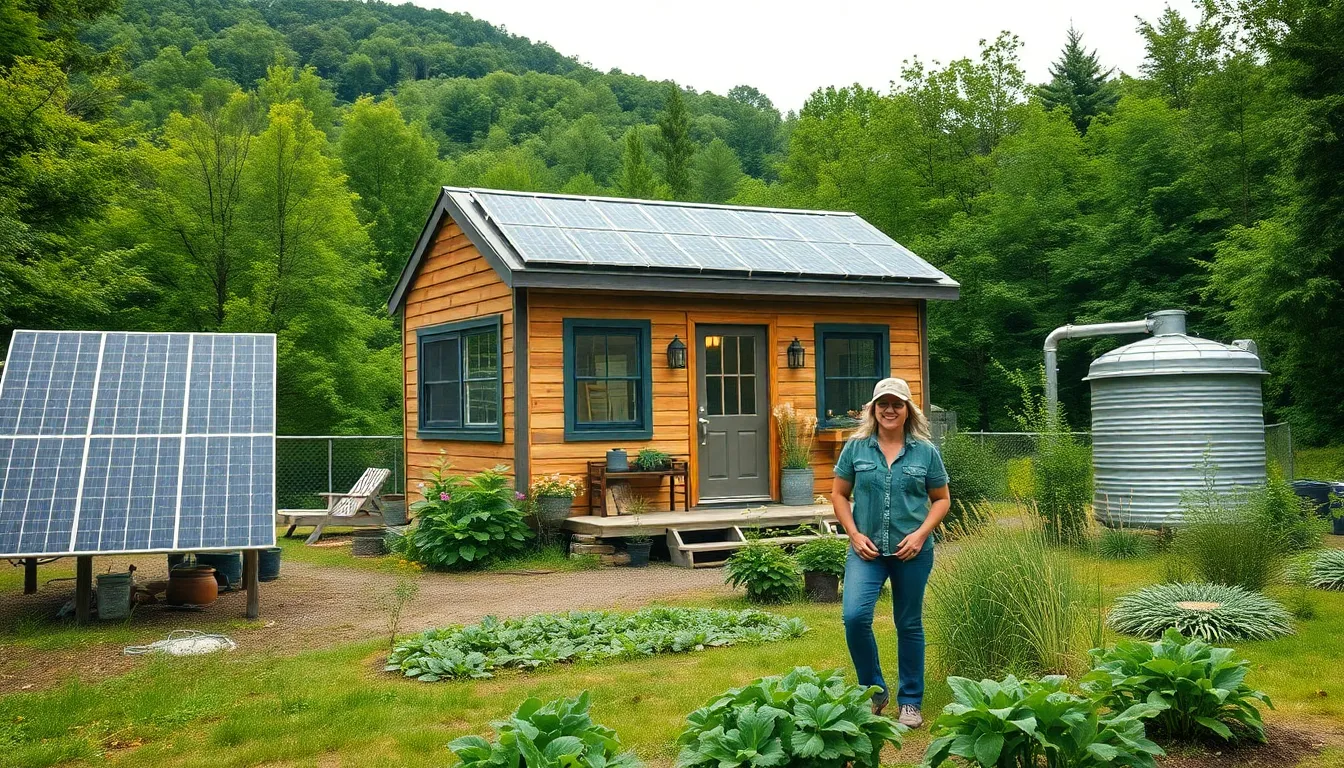Table of Contents
ToggleOff-grid tiny homes are redefining the way people think about sustainable living. With rising concerns over environmental impact and the desire for a simpler lifestyle, these compact dwellings offer a unique solution. They combine minimalism with eco-friendliness, allowing individuals to disconnect from the grid while enjoying the comforts of home.
Embracing an off-grid lifestyle means more than just reducing one’s carbon footprint; it’s about fostering a deeper connection with nature. These tiny homes often utilize renewable energy sources like solar power and rainwater harvesting, making them self-sufficient and efficient. As the trend gains momentum, more people are discovering the freedom and fulfillment that come with living in a space that’s both small and sustainable.
What Are Off-Grid Tiny Homes?
Off-grid tiny homes are compact living spaces designed to operate independently from traditional utility systems. These homes utilize renewable energy sources, such as solar panels and wind turbines, to generate electricity. They often incorporate advanced water collection systems, like rainwater harvesting and filtration, for self-sufficiency.
Off-grid tiny homes serve various purposes, including full-time residences, vacation getaways, or temporary retreats. They allow occupants to minimize their ecological footprint while maintaining modern comforts. Many designs embrace minimalistic aesthetics, focusing on functionality and efficiency.
Off-grid living fosters a sustainable lifestyle by reducing reliance on non-renewable resources. These homes often feature composting toilets, greywater systems, and energy-efficient appliances. The emphasis on sustainability aligns with a growing desire for a simpler, more conscious way of life. As communities explore alternative housing options, off-grid tiny homes continue to gain popularity.
Benefits of Off-Grid Living

Off-grid living offers numerous advantages, primarily focusing on environmental sustainability and financial savings. This section explores key benefits, highlighting the significance of off-grid tiny homes.
Environmental Impact
Environmental impact significantly reduces when adopting off-grid living. Tiny homes utilize renewable energy sources, diminishing reliance on fossil fuels. The use of solar panels for electricity and rainwater harvesting systems for water supply mitigates carbon footprints. Utilizing composting toilets and greywater systems also conserves water, promoting sustainable practices. Many tiny home builders prioritize eco-friendly materials, further enhancing the positive environmental effect. Embracing this lifestyle fosters a stronger connection to nature, encouraging occupants to appreciate and preserve their surroundings.
Cost Savings
Cost savings play a crucial role in off-grid living. Off-grid tiny homes often reduce monthly utility bills by eliminating dependence on municipal services. While upfront costs may vary depending on design and materials, long-term savings on energy and water bills prove beneficial. Homeowners can achieve substantial savings through energy independence, especially with solar energy systems. Additionally, off-grid living typically results in reduced property taxes due to lower assessed values. Lower maintenance costs often accompany simpler designs, allowing occupants to allocate funds toward sustainable practices and vital personal investments.
Key Features of Off-Grid Tiny Homes
Off-grid tiny homes incorporate essential features that promote self-sufficiency and sustainability. These dwellings utilize renewable energy sources and sustainable building materials, contributing to a minimal environmental impact.
Energy Sources
Energy independence is a primary characteristic of off-grid tiny homes. Solar panels convert sunlight into electricity, making solar energy a popular choice. Wind turbines supplement energy needs in areas with consistent wind patterns. Additionally, some configurations integrate battery storage systems, ensuring power availability during low generation periods. Occupants often utilize energy-efficient appliances which further reduce consumption, creating a harmonious balance between energy use and available resources.
Sustainable Materials
Sustainable materials play a crucial role in the construction of off-grid tiny homes. Builders often choose reclaimed wood, bamboo, and recycled metals to minimize environmental impact. Insulation materials such as cellulose and sheep’s wool enhance energy efficiency, reducing heating and cooling demands. Low-VOC paints and finishes contribute to a healthier indoor air quality, ensuring occupants enjoy a safe environment. By selecting eco-friendly materials, off-grid tiny homes exemplify sustainable living practices that align with their overall purpose and design philosophy.
Challenges of Off-Grid Tiny Homes
Off-grid tiny homes present unique challenges that potential homeowners must consider. These challenges include navigating zoning laws, adhering to building regulations, and maintaining essential systems.
Zoning and Regulations
Zoning laws significantly impact the viability of off-grid tiny homes. Local jurisdictions often impose restrictions on land use and building codes. Homeowners may encounter regulations regarding minimum square footage, restrictions on temporary structures, or limitations on utilityless homes. It’s crucial for builders to conduct thorough research to understand local regulations and secure necessary permits before construction. Failure to comply can result in fines, forced relocations, or legal issues.
Maintenance Issues
Maintaining off-grid tiny homes requires dedicated effort and knowledge. Homeowners depend on renewable energy systems, which necessitate regular inspections and potential repairs to solar panels or wind turbines. Water collection systems, such as rainwater harvesting, demand consistent upkeep to ensure cleanliness and functionality. Additionally, waste management systems, including composting toilets, require periodic maintenance to operate efficiently. Familiarity with these systems can help offset potential challenges and ensure long-term sustainability in off-grid living.
Off-grid tiny homes represent a significant shift toward sustainable living and environmental responsibility. By embracing this lifestyle, individuals can enjoy the freedom of self-sufficiency while minimizing their ecological footprint. The combination of renewable energy sources and eco-friendly materials not only enhances comfort but also fosters a deeper connection with nature.
As more people explore this innovative housing option, the benefits of off-grid living become increasingly evident. While challenges exist, the rewards of energy independence and cost savings make it an appealing choice for those seeking a simpler, more conscious way of life. Off-grid tiny homes are more than just a trend; they embody a vision for a sustainable future.







